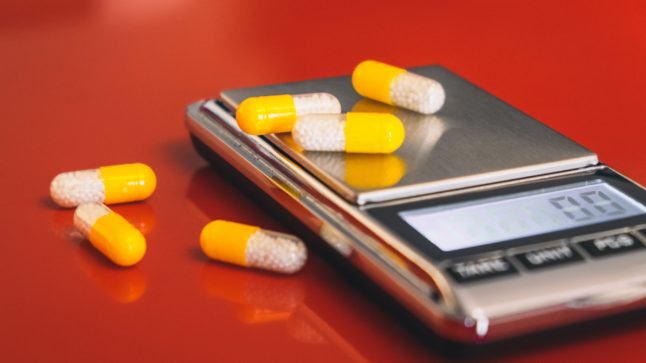It was the 2008 melamine baby powder scandal that finally made food safety a national priority in China. And the 2016 vaccine scandal may be what similarly finally wakes Chinese consumers up to the issue of drug safety. Unfortunately, sick newborns may again be the mobilizing image.
Drug scandals have been happening in China for a long time. But they have mostly been below the media radar. As recently as late 2015, the US FDA banned 15 drug products from Pfizer-partner Zhejiang Hisun. Their cited concern was quality controls at the China facilities. Hisun has since said it has addressed the problems. But this example is particularly concerning because Hisun is arguably the best of the +700 Chinese facilities involved in drug making today.
So if Hisun had issues it raises the question: How big of a problem is drug safety in China?
My prediction is that drug scandals will eventually dwarf the food scandals in terms of morbidity, mortality and reach. Here is my argument:
#1 Drug scandals cause greater morbidity and mortality than food scandals because they hit more vulnerable populations.
The melamine milk powder scandal was a turning point because it impacted a particularly vulnerable population (i.e., newborns). But pharmaceuticals are regularly consumed by other highly vulnerable populations. In particular, the sick and the elderly.
For example, in 2012, Chinese authorities detained approximately 2,000 people in a crackdown on fake and counterfeit drugs. The fake drugs they seized included those used to treat cancer, hypertension and diabetes. What was the likely impact of these fake drugs on cancer patients? Or of the long-term use of fake hypertension and diabetes drugs by those with chronic conditions?
The human cost of fake, contaminated and substandard drugs on the sick and elderly is simply much greater than that of food scandals.
#2 Drug scandals are harder to detect.
Food scandals are actually relatively easy to catch. The food tastes or looks funny. Healthy people feel sick and go to the ER. Plus you can just walk into a food processing plant or restaurant and catch things like workers using old meat.
But fake, contaminated and substandard pharmaceuticals (or their ingredients) are hard to detect. A pill looks like a pill. And patients rarely become acutely ill (many are already sick anyways). You usually need specialized equipment to check the quality of the pills.
Note that in the recent vaccine scandal, in which vaccines were likely sold after their expiration dates, there were no real visible outcomes. If the ring hadn’t been caught, the parents would likely have never known that their children weren’t actually immunized.
Drug scandals are a much harder problem to detect, even when you are actively looking for it.
#3 The fake drug industry is big and profitable.
The fake drug industry has been around for a long time. Companies sell everything from fake Viagra to diluted hypertensives. They also sell drugs that have been banned in the West for safety reasons. And all of this is big money. The couple in the recent vaccine scandal had over $90M in illegal sales.
Plus there are hundreds, if not thousands, of these mostly fly-by-night companies. They sell into the supply chain, via little retail stores, in backdoor pharmacies and on the Internet. In 2013 alone, Chinese police closed down 140 illegal websites and online pharmacies in 29 provinces. It’s a problem that is both profitable and difficult to stop.
#4 Unlike most food scandals, drug scandals are a global problem.
If you are taking a pill in the US, part of it probably came from China. Over 80% of the world’s active pharmaceutical ingredients are now made in China and India (but mostly in China). So these drug problems have global reach.
The most famous example of this was the 2008 Heparin scandal. Tainted Heparin from China ended up killing over 240 Americans. As a result, 34 China facilities (via Baxter International) were banned from exporting.
And it gets more complicated. A lot of these quality problems are actually in the chemistry, as opposed to just in the final drug or in the active pharmaceutical ingredient. In 2012, police in China detained +60 people who were making chromium-tainted gel capsules with industrial waste. The police seized over 77 million gel capsules and shut down 80 production lines. Think about those numbers for a moment. 77M capsules and 80 production lines.
But the biggest “global” aspect of this problem is likely in other developing economies. Fake drugs are everywhere in SE Asia and Africa. And many are coming from China. The morbidity and mortality resulting from this is hard to overstate. For example, the Wellcome Trust estimated that one-third of the malaria drugs in Uganda may be fake or substandard.
Final Point: Pharmaceuticals in China are going to grow. But absent improvements, drug scandals could also become much bigger as well.
Healthcare spending today in China is about 6% of GDP, up from 4-5% a few years ago. It is likely on its way to 12-13%. And China’s pharmaceutical market, already big at $108B (2015), is growing along with this. All of this is good news. It follows naturally from growing domestic demand (aging + increasing wealth + more chronic disease) and a continued movement of pharmaceutical production to China.
So this is a big market that is growing fast and developing in sophistication. But it logically follows that any future quality problems will also be larger in scale. That is worrisome.
Thanks for reading. Cheers, -j
——–
Thanks for reading. My writing (and speaking) are on how rising Chinese consumers are changing the world. (#ConsumerChina). This also includes work on:
- “China 2025″ – what a region transformed by Chinese consumers, companies and capital is going to look like. (#China2025)
Photo by Benedikt Geyer on Unsplash
